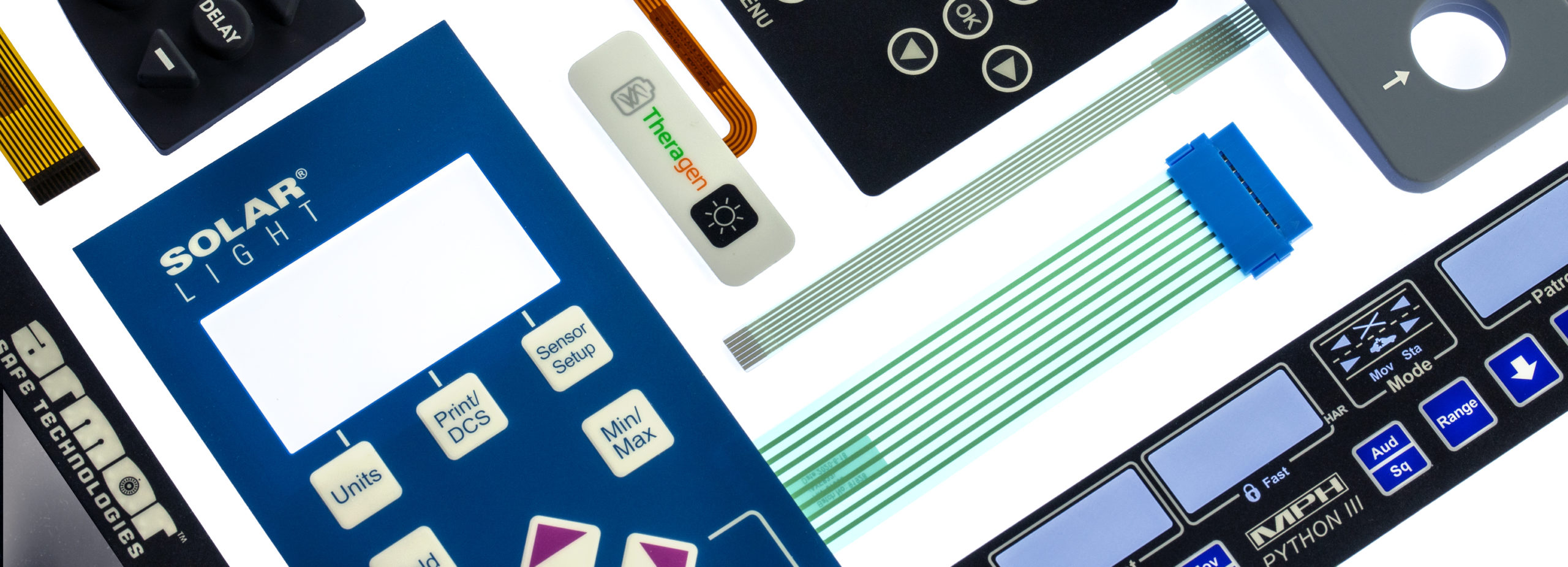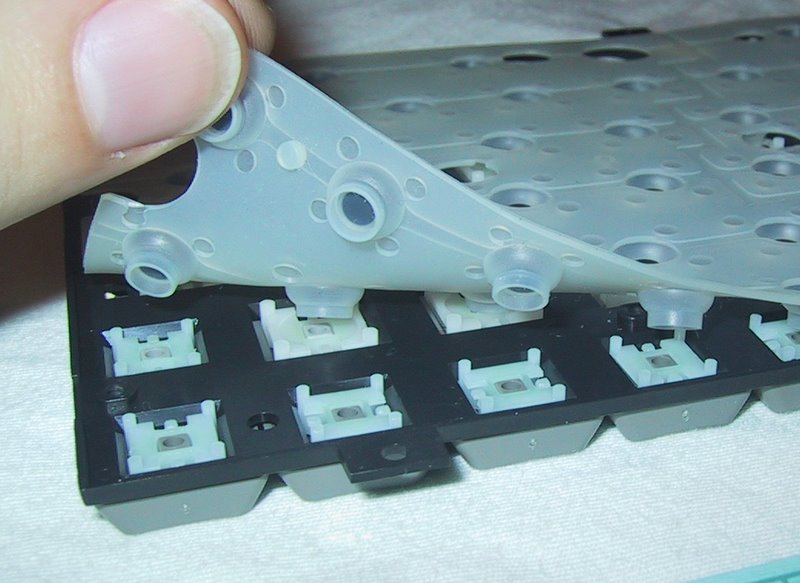All Concerning Membrane Switch Over: Recognizing Its Style and Capability
When you believe about the control interfaces in modern tools, membrane layer switches often come to mind. Allow's discover what sets membrane switches apart from other control systems.
What Are Membrane Layer Buttons?

Membrane buttons can additionally be tailored relating to shape, size, and graphics, permitting manufacturers to create unique user interfaces customized to details items. Generally, membrane buttons play a substantial role in improving user experience throughout a broad range of applications.
Just How Membrane Switches Over Job
When you push a trick on a membrane layer switch, it triggers an uncomplicated yet effective mechanism. membrane switch manufacturer. The top layer, usually made of adaptable material, presses down onto a conductive layer under it.
You'll observe that the tactile responses varies based on the switch design, using either a soft click or an extra noticable reaction. Once you launch the trick, the membrane go back to its initial setting, reopening the circuit and quiting the signal. This procedure occurs nearly instantaneously, making certain a receptive customer experience.
Membrane switches are preferred because of their sturdiness and resistance to dust and wetness, making them perfect for various applications, from home home appliances to medical devices. Recognizing this operation aids you value their widespread use.
Key Elements of Membrane Buttons
Recognizing the essential parts of membrane layer switches is essential for grasping their capability and design. The safety layer guards versus ecological aspects and put on, prolonging the button's life expectancy. By understanding these elements, you'll acquire insight into just how membrane layer switches over run and their importance in various applications.
Products Used in Membrane Switch Over Design
The efficiency and toughness of membrane layer changes heavily depend on the materials used in their layout. You usually encounter polyester and polycarbonate as primary substratums as a result of their outstanding stamina and adaptability. These materials resist scrapes and chemicals, making them suitable for requiring environments.
The conductive layers commonly use silver or carbon, picked for their integrity and conductivity. membrane switch manufacturer. Silver supplies exceptional efficiency, while carbon is a cost-effective option. For the overlay, you might take into consideration a matte or glossy surface, depending on your aesthetic needs and individual experience
Adhesives play a vital role as well; they bond layers securely and ensure long life. Make certain to choose adhesives that stand up to ecological elements like temperature level and moisture. Finally, do not overlook the relevance of an excellent printing method for graphics, as it enhances both performance and aesthetic appeal. Picking the ideal materials will certainly assure your membrane layer switch stands the test of time.
Style Considerations for Membrane Buttons
While developing membrane switches, it's essential to take right into account numerous factors that influence their performance and user experience. Start by concentrating on the layout and button dimension; make specific they're intuitive and easy to navigate.
Validate your style accommodates ecological elements, like dampness or temperature level variations, which might affect efficiency. By very carefully thinking about these elements, you'll develop a membrane switch that boosts use and contentment.
Applications of Membrane Switches
Membrane layer switches are flexible components discovered in different applications, from industrial devices to consumer electronics. You'll see their effect in machines that require durable interfaces and in devices that take advantage of sleek layouts. Understanding these applications assists you appreciate the capability and functionality of membrane switches in daily innovation.
Industrial Devices Use
When you're looking to improve the functionality of commercial equipment, membrane layer buttons supply a reputable remedy that combines toughness with user-friendly style. These switches are best for rough atmospheres, giving resistance to dust, wetness, and chemicals. Embrace membrane layer buttons to simplify your procedures and enhance general performance.
Consumer Electronics Integration
In the domain of consumer electronics, membrane buttons play a vital duty in improving individual communication and tool performance. You'll discover them in tools like microwaves, remotes, and gaming consoles, giving a smooth means to interact with innovation. Their smooth design permits very easy integration into numerous products, making controls instinctive and straightforward. With their capacity to include graphics and backlighting, you can enjoy a contemporary visual that enhances the gadget's general appearance. Membrane switches additionally assure toughness and resistance to dust and moisture, expanding the life expectancy of your electronic devices. By choosing membrane layer switches, you enhance not simply the functionality yet likewise the style of your gadgets, making everyday interactions smooth and pleasurable.
Advantages and Drawbacks of Membrane Layer Switches
While membrane switches offer a series of benefits, they additionally include some disadvantages that you should think about. One significant benefit is their portable layout, making them optimal for space-constrained applications. They're additionally affordable, offering a resilient remedy with a low manufacturing expense. In enhancement, their seamless surface is very Read Full Article easy to clean, improving health in settings like hospitals.

Membrane layer buttons can have a much shorter life expectancy contrasted to mechanical buttons, particularly under hefty use. They can additionally be much less responsive, which could impact user comments during procedure. Balancing these pros and disadvantages will help you establish if membrane switches are the appropriate fit for your job.
Frequently Asked Inquiries
Exactly How Long Do Membrane Switches Generally Last?
Membrane layer switches typically last in between 5 to 10 years, relying on usage and environmental conditions. You'll wish to assess factors like wear, exposure to dampness, and temperature level changes to gauge their durability successfully.
Can Membrane Layer Changes Be Customized for Particular Designs?
Yes, you can personalize content membrane buttons to fit particular layouts (membrane switch manufacturer). You'll have the freedom to pick shades, shapes, and formats that match your project's needs, guaranteeing they mix flawlessly with your general visual
What Is the Cost Range for Membrane Layer Switch Over Production?
The cost array for membrane switch manufacturing typically falls in between $1 and $10 each, depending on elements like style complexity, amount, and materials. You can get quotes from suppliers to find the most effective choice.

Are Membrane Changes Water-proof or Resistant?
Membrane buttons can be developed to be water resistant my latest blog post or immune, depending on products utilized and building techniques. If you require them for wet environments, ensure you define those demands during the layout procedure.
Exactly How Do Membrane Layer Switches Compare to Conventional Buttons?
Membrane layer buttons are generally thinner and a lot more flexible than typical buttons, providing a streamlined style. They're often much easier to cleanse and incorporate, yet may not provide the responsive feedback you're made use of to with mechanical choices.
Final thought
